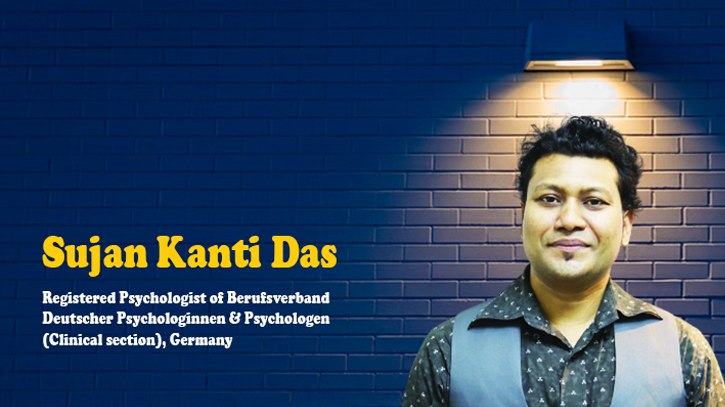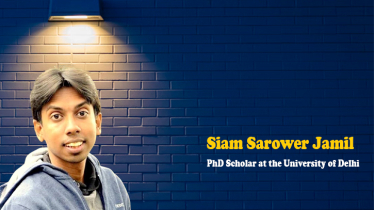
Photo : Messenger
Rumours have been a part of human communication for as long as societies have existed. From ancient gossip to modern viral misinformation, the spread of rumours is a fascinating subject that reveals much about human psychology and social dynamics. This article delves into the psychological mechanisms behind the proliferation of rumours and their impact on individuals and societies.
Understanding Rumours:
Rumours are unverified pieces of information that spread informally within communities, often shaping perceptions and behaviors. They arise when facts are incomplete or ambiguous, prompting individuals to fill in gaps with speculation. Understanding the dynamics of rumour spread is crucial, as it affects decision-making and social cohesion in various contexts. In social settings, rumors can influence group behaviour and trust; in political environments, they may sway public opinion and impact elections; and in organisations, they can affect workplace morale and productivity. Investigating the psychological mechanisms behind rumours helps elucidate their pervasive impact and offers strategies for managing their effects.
Historical perspective:
Early instance:
Throughout history, rumours have significantly influenced societies. Early examples include the rumours of witchcraft in mediaeval Europe, which led to widespread hysteria and brutal trials. Similarly, during the Roman Empire, rumours about political plots could incite unrest or sway public opinion, demonstrating the power of misinformation in shaping historical events.
Evaluation over time:
Rumours have evolved significantly with advancements in communication technology. Initially spread orally in small communities, they transitioned to written forms in newspapers and pamphlets. The advent of radio and television broadened their reach, while the internet and social media now enable rapid global dissemination. This evolution has accelerated the spread and impact of rumours, amplifying their potential effects.
Psychological Mechanisms Behind Rumour Spread:
Cognitive Biases:
Rumour spread is heavily influenced by cognitive biases. Confirmation bias causes individuals to favour information that supports their preexisting beliefs, making them more likely to propagate rumours that align with their views. The availability heuristic leads people to overestimate the likelihood of events based on their ease of recall, amplifying the spread of sensational or memorable rumors. Both biases distort perception and reinforce the persistence of misinformation, as individuals readily accept and disseminate rumours that fit their cognitive framework or are readily accessible in their memory. These biases facilitate the rapid and widespread circulation of unverified information.
Social influence: Rumour spread is heavily influenced by social networks and group dynamics. Within these networks, individuals are often exposed to rumours through interpersonal interactions and media channels. The social influence theory suggests that people are more likely to believe and share information that aligns with their social group's beliefs or behaviors. Group dynamics, including peer pressure and the desire for social acceptance, amplify this effect, making rumours more pervasive as individuals seek to conform to group norms and validate their social connections.
Emotional appeals:
Emotional appeals play a crucial role in rumour spread by amplifying the message’s impact. Fear, excitement, and other strong emotions enhance a rumor’s memorability and urgency, making it more likely to be shared. Fear-driven rumours provoke quick reactions and heightened attention, while excitement-driven ones foster positive engagement, both increasing the rumour’s reach and persistence.
Mechanisms of Spread:
Rumours spread through various mechanisms, with word of mouth being the oldest and simplest method. Traditionally, this involved personal communication among individuals, and its effectiveness depends on the credibility of the sources and the social networks involved. Media and technology have significantly amplified rumour dissemination. Social media platforms and digital news outlets enable rapid, widespread sharing, often bypassing traditional gatekeeping processes. This immediacy can accelerate the spread of rumours, making them more pervasive and harder to control.
Viral dynamics play a crucial role in how rumours gain traction. Factors such as emotional appeal, relevance, and the ease of sharing contribute to a rumour's virality. As individuals share and re-share content, rumours can reach a vast audience quickly, often gaining momentum due to their sensational nature or because they resonate with prevailing concerns or beliefs.
Consequences of Rumor Spread:
Individual Impact:
The spread of rumours can significantly impact individuals by altering their personal behaviour, beliefs, and mental health. When people are subjected to rumours, they may experience heightened anxiety, stress, or paranoia as they grapple with uncertainty and potential misinformation. This psychological strain can lead to changes in behaviour, such as social withdrawal or defensive actions. Beliefs and perceptions may also shift as individuals begin to question their understanding of situations or people based on unreliable information. Over time, this can erode trust and lead to a decline in overall mental well-being.
Organisational Impact:
Rumour spread in organisations can severely impact workplace morale and decision-making. It often fosters mistrust, decreases employee engagement, and creates unnecessary conflict. Leaders may face challenges in maintaining a positive environment and making informed decisions, as rumors can distort perceptions and undermine the integrity of communication within the organisation.
Societal Impact:
The spread of rumours can significantly affect societal dynamics by shaping public opinion, potentially altering political stability and undermining societal cohesion. Misinformation can lead to misinformed decisions, erode trust in institutions, and polarise communities. As rumours propagate, they can amplify fears and divisions, influencing political landscapes and social interactions in potentially destabilising ways.
Case study:
Historical Examples: Throughout history, rumours have had profound impacts. For instance, the "Dreyfus Affair" (1890s France) involved false accusations of treason against a Jewish army officer, leading to widespread antisemitism and political upheaval. Similarly, the "Blood Libel" allegations against Jews in mediaeval Europe incited violence and persecution, illustrating how rumours can fuel societal unrest.
Recent student movements in Bangladesh, notably those in 2024, exemplify how rumours can rapidly influence public opinion in the digital age. Social media played a crucial role in amplifying and spreading misinformation, which significantly impacted the movement's dynamics and public perception, highlighting the power and pitfalls of digital communication.
Mitigation Strategies:
Mitigation strategies for combating misinformation include rigorous fact-checking and verification to ensure the accuracy of information before dissemination. Promoting education and awareness enhances media literacy and critical thinking, empowering individuals to discern credible sources from unreliable ones. Additionally, social media platforms and news outlets play a crucial role by implementing measures to identify and limit the spread of false information, such as flagging dubious content and fostering transparency in reporting. These combined efforts are essential for maintaining an informed public.
Future Directions:
Future technologies, such as advanced AI and deepfake technology, could significantly amplify the spread of rumours by making misinformation more convincing and widespread. To mitigate these risks, research needs to focus on developing robust detection methods for false information and improving digital literacy. Additionally, studying the impact of emerging social media platforms and the role of algorithms in rumour propagation can provide insights into more effective interventions and strategies for managing misinformation.
In summary, the spread of rumours is driven by cognitive biases, emotional reactions, and social dynamics.
Psychological mechanisms such as confirmation bias, social proof, and the need for coherence play critical roles in how rumours proliferate and gain traction. To mitigate their impact, it is essential to foster awareness and critical thinking. Continued vigilance and education are crucial in equipping individuals with the tools to recognise and address misinformation, thus promoting a more informed and resilient society.
The writer is a Registered Psychologist of Berufsverband Deutscher Psychologinnen und Psychologen (Clinical section), Germany.
Messenger/Fameema








